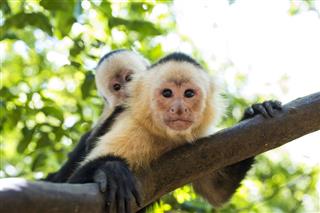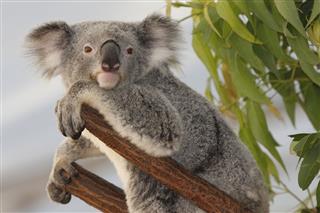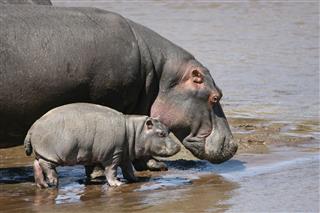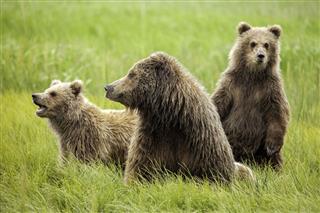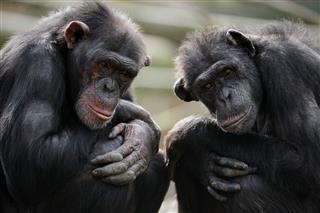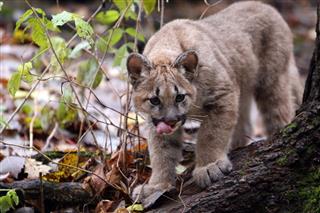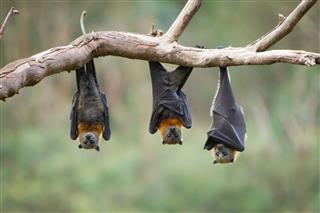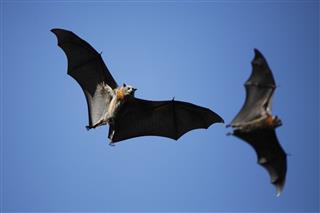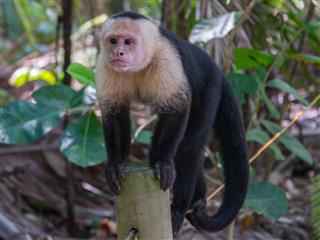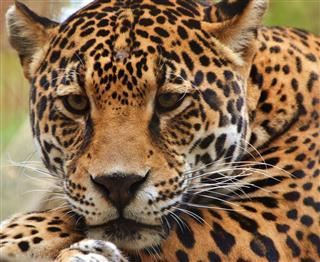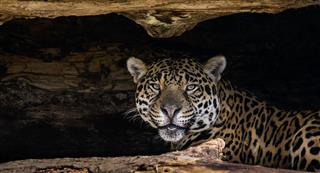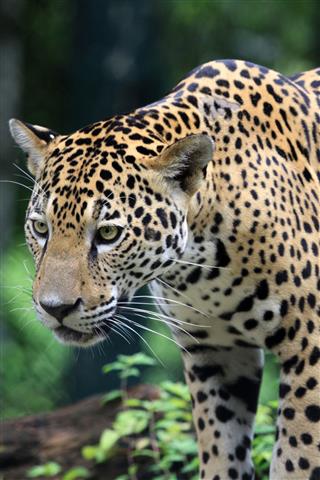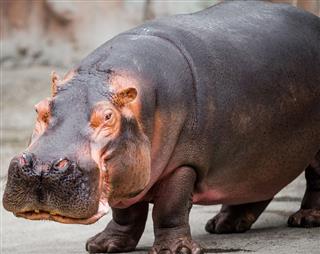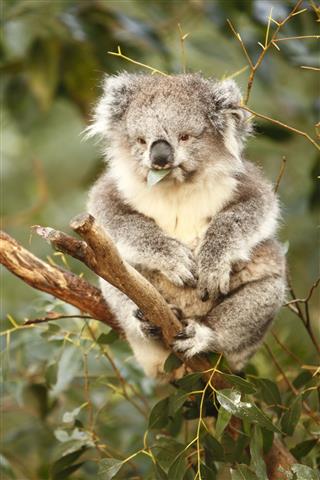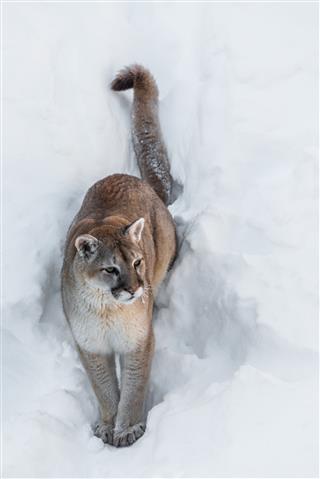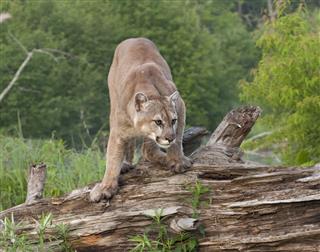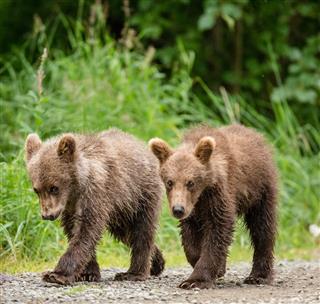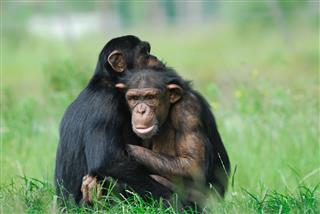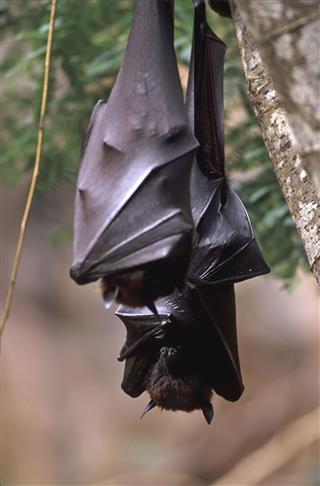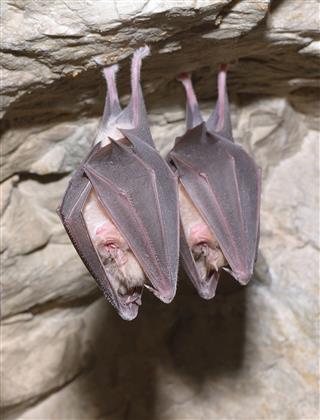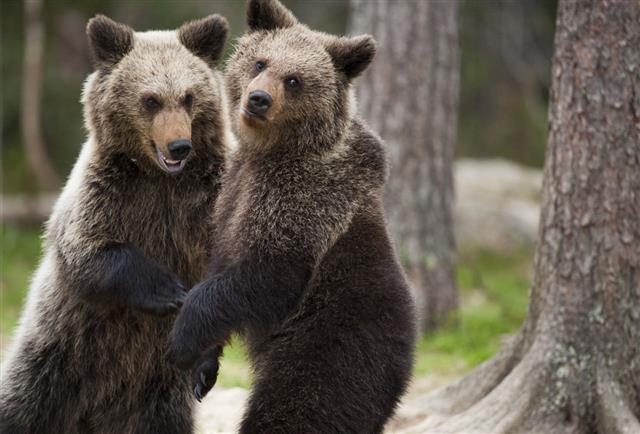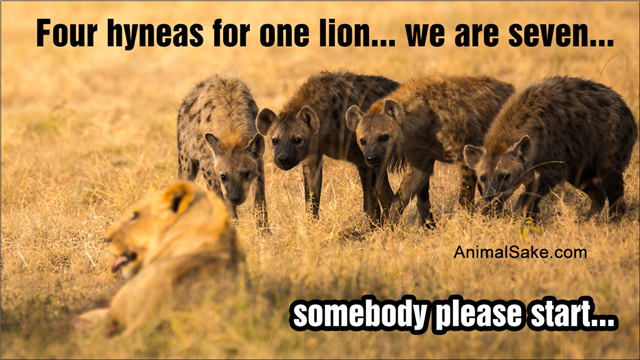
Jungles have always been a subject of fascination for mankind. If you sit to compile a list of animals found in various jungles of the world – i.e. the species and its subspecies – it will simply go on and on.
A jungle, by definition, is an area with dense vegetation, marked by intense competition and struggle for survival. More than half of the total animal species on the planet are found in jungles, and that makes it nearly impossible to compile a list of jungle animals. It would take a lot of time to come up with a list like that, and that too will be ‘near perfect’ – and not perfect – because several species out there are yet to be discovered or classified. Contrary to the popular belief that animals mean only mammals, in reality, the animal kingdom (or the ‘kingdom Animalia‘) also includes birds, insects, and reptiles.
Jungle Animals A to Z List
The jungles on the planet are home to millions of animal species, which vary in terms of shape, size, appearance, habitat, food habits, etc. Knowing what kind of animals live in the jungle is important, as it helps us understand the jungle ecosystem – and the importance of preserving it. Given below is an alphabetical list of animals that live in a jungle, in which we have tried to include some of the most popular species from around the world.
Antelopes
Antelopes are ruminant mammals belonging to the Bovidae family, and are typically characterized by their unbranched horns which never shed. They are categorized into different species, based on their native habitat and appearance. Around 90 percent of these species are native to Africa alone. Some of the most popular species include the Arabian oryx and Dorcas gazelle native to Arabian peninsula, the Chinkara and Blackbuck species native to the lush green forests of India, the Tibetan antelope and Saiga native to Russia and Southeast Asia, etc.
Armadillos
Armadillos are placental mammals primarily found in South and Central America, which are typically characterized by their leathery armor shell. (‘Armadillo’ is a Spanish word, literally meaning the ‘little armored one’.) There exist several sub-species of this mammal with their length varying between 5-59 in., and weight ranging between 4-120 lbs. Armadillos are lazy animals, and spend about 16 hours a day sleeping in their burrows. The rest of the day is spent hunting and feeding on beetles, ants, termites and other insects.
Bats
Bats boast of being the only mammalian species with the ability to fly – i.e. sustained flight, and not gliding like the flying squirrels. There exist somewhere around 1,240 species of bats on the planet, 70 percent of which are insectivorous. Bats make up nearly half of all the mammalian species in the rainforests, where they play the crucial role of a pollinator. Some of the most popular bat species include the giant golden-crowned flying fox, vampire bats (due to which bats are often associated with vampires), Kitti’s hog-nosed bat, Mexican free-tailed bat, etc.
Bears
Bears are mammalian species belonging to the Ursidae family of animals, and are found all over the Northern Hemisphere and some parts of the Southern Hemisphere. There are 8 living species of bears on the planet; the American black bear, brown bear, Asian black bear, polar bear, sloth bear, sun bear, spectacled bear, and the giant panda. Except for the polar bear, which is completely carnivorous, and the Giant Panda, with 90 percent of its diet comprising bamboo shoots, all other species of bears are omnivorous in nature.
Chimpanzees
Chimpanzees are highly intelligent species which share 98 percent of the genetic blueprint of humans. Their native habitat spans West and Central Africa. They are known to adapt to various habitats, ranging from dense forests to open grasslands. They can grow up to a height of 4-5.5 ft. and weigh between 70-130 lbs at full growth. Chimps usually feed on plants, but at times have also been seen feeding on insects and carrion. Though they walk on all fours most of the time, they do have the ability to stand upright and walk in that position.
Cougars
The cougar, also referred to as the puma, mountain lion, or panther, is one of the most powerful predators in the Americas. Cougars are found in many parts of the continent, ranging from dense forests of Canada to swamps of Florida. They can grow to a length of about 3.25-5.25 ft. and weigh about 136 lbs. These ambush predators feed on large prey such as elk, wild horses, white-tailed deer, armadillos, etc. Being a non-scavenging animal, it doesn’t feed on carrion, but instead only feeds on the prey it has killed.
Deer
A deer is a ruminant mammal belonging to the Cervidae family of animals. Almost all males grow and shed horns ever year, and that distinguishes them from animals with permanent horns, like the antelopes. The moose (also referred to as Eurasian elk) native to North America and Europe, is the largest species of deer, while the Pudu, native to South America, is the smallest. Other prominent species include the reindeer, sambar, barasingha (swamp deer), spotted deer, fallow deer, red deer, black-tailed deer and the white-tailed deer.
Elephants
While elephants are usually considered the largest land mammals on planet Earth, it is the African bush elephant, with a height of 8.2-13 ft. and weight of 5,000-14,000 lbs, which is specifically the largest land animal on the planet. It is 1 of the 3 extant elephant species; other 2 being the African forest elephant and the Asian elephant. As their name suggests, the African forest elephants are known to inhabit the dense forests of Africa. The Asian elephants, on the other hand, are usually found in the forested areas of Asia.
Foxes
Foxes are small to medium-sized canids, sporting a long narrow snout and a bushy tail. There are 37 identified species of this animal spread all over the world. Some of the most popular species are the red fox, kit fox, Arctic fox, fennec fox, Darwin’s fox, crab-eating fox, etc. Found almost on all the continents, the red fox is the most common species of fox. The fennec fox is the smallest of the species, growing to a length of about 9.5-16 in. and weighing between 2.2 to 3.3 lbs. Being omnivorous in nature, foxes feed on berries, fruits, fish, birds, rodents, rabbits, reptiles etc.
Gorillas
Gorillas are the largest living primates on the planet in terms of size. Basically, there exist 2 species of gorillas – the Western gorillas and the Eastern gorillas; their geographical range is separated by the Congo River and its tributaries. The exact number of gorilla sub-species however, is a subject of contention – with some sources stating 4 sub-species and some stating 5. These ground dwelling primates are herbivorous in nature, and therefore the tropical and subtropical moist broadleaf forests make an ideal habitat for them.
Hedgehogs
A hedgehog is a carnivorous mammal sporting a coat of stiff, sharp spines, native to Asia, Europe and Africa. Hedgehogs are also found in the New Zealand, where they were introduced. They most often feed on worms, insects, snails, centipedes, mice, frogs, and snakes. Though their eyesight is weak, they have a strong sense of smell and hearing. If attacked hedgehogs roll into a ball, and deceive their predators. Some of the most prominent species are the European hedgehog, Amur hedgehog, Indian long-eared hedgehog, etc.
Hippopotamus
Hippopotamus is a herbivorous mammal native to the African continent. It is characterized by its large size, enormous mouth with large teeth and stubby legs. Hippos are ranked third in terms of weight, after elephants and rhinoceros. It is the pygmy hippopotamus which is usually known to inhabit the forested areas. These aggressive creatures are regarded as the most ferocious of the African wildlife. Found in abundance at one time, today they are battling for their basic survival owing to excessive poaching and loss of habitat.
Hyenas
Hyenas are carnivorous mammals found in Asia and Africa. Some of the most prominent species of hyena include the spotted hyena (also known as laughing hyena), striped hyena, brown hyena, and the aardwolf. Hyena species are known to inhabit a range of habitats, right from grasslands and semi-deserts to dense forests. They are not just efficient hunters, but are also known widely for their scavenging habits. Their strong jaw and equally strong digestive system helps them eat and digest even the teeth and the bones of their prey.
Jaguars
The jaguar is the only species of the Panthera genus found in the Americas. It is the third largest feline in the world, and one of the most prominent predators of the tropical rainforest biome. The animal largely resembles a leopard, but a close look differentiates it from leopards on the basis of its bulky built. It has one of the most powerful bites among the felines, and can pierce its sharp teeth right through the skull of its prey. The range of this solitary hunting stalk-and-ambush predator is very vast, often spanning the dense forests and open terrains of the Americas.
Koalas
Even though it is referred to as the koala bear, this pouched mammal is not a bear – nor is it related to the bear family. Koalas are actually marsupials native to eastern Australia, which are known to carry their young ones in their pouch for six months after the birth. At full growth, they can weigh around 20 lbs. They feed on eucalyptus leaves and spend most of the time on these trees, and are known to spend eighteen hours of the day sleeping. Koalas can stay without water for several days, deriving the necessary amount of moisture from the eucalyptus leaves they eat.
Lemurs
Lemurs are the members of a group of primates called the Strepsirrhines, endemic to the island of Madagascar. They are often characterized by their large, reflective eyes, and wailing cries. The 4 families of lemurs comprise 99 species, and their sub-species. One of these is the Aye-aye, sporting rodent-like teeth and a distinct, long middle finger. Growing to a length of 12-15 in. and weighing around 5.5 lbs, the Aye-aye is the world largest nocturnal primate. Other prominent species of lemur include the brown lemurs, dwarf lemurs, woolly lemurs, etc.
Leopards
The leopard, the smallest among the big cats, is native to southern Asia and Africa. It is most often characterized by its speed and ability to climb; traits which come handy when it comes to hunting in grasslands, mountainous regions and rainforests. According to the IUCN, there exist 9 species of leopards – the most prominent ones being the Indian leopard, Javan leopard, Amur leopard, Sri Lankan leopard, etc. While some sources include snow leopard and clouded leopard as leopard subspecies, their inclusion is subject to debate.
Lions
Lions are usually associated with grasslands; the African Savannas in particular. However, a small population of lions does thrive in the Gir forests of Gujarat, India. On the basis of their range, lions are grouped into African lions, those native to the continent of Africa, and Asiatic lions, those native to Asia. In terms of size, the African lion – measuring about 4.5-6.5 ft. and weighing 265-420 lbs – is larger than the Asian lion. Usually lions hunt in groups referred to as a ‘pride’; a single pride consists of around four-six individuals.
Lynx
Lynx are solitary wildcats found across the continents of North America, Europe, and Asia. There are four species of lynx – the Eurasian lynx, found in dense forests of Europe and Siberia, Canadian lynx, found in tundra forests of Canada and Alaska, the Iberian lynx, native to the Iberian peninsula in southern Europe, and the Bobcat, found in Canada, Mexico and the continental United States. Of these, the bobcat is perhaps the most popular species, and is not just found in forested areas, but is also known to thrive in semi-arid regions of the United States and Mexico.
Mongooses
Mongooses are carnivorous mammals native to most parts of Africa, southern Asia and the Iberian peninsula. As many as 33 species have been identified; the most prominent ones being the common dwarf mongoose, white-tailed mongoose, marsh mongoose, the Indian gray mongoose, etc. Their size and weight varies according to the species, with their length ranging between 7-25 in. and weight between 12 oz-11 lbs. Though most of the mongoose species are terrestrial, some are aquatic, and some arboreal.
Monkeys
Monkeys form yet another group of jungle animals, with more than 260 species inhabiting different forests of the
world. These include the New World monkeys, like capuchins and marmosets, as well as the Old World monkeys, like baboons and macaques. Monkeys are normally differentiated from the apes on the basis of their tails. The Pygmy Marmoset is approximately 5-6 in. tall and weighs between 4-5 oz, while the Mandrill is 3.3 ft. tall and weighs around 77 lbs. Most of these species are arboreal, which makes the jungle the best habitat for them.
Red Pandas
The red panda is a herbivorous mammal found in the Himalayas, in Nepal, Central China, and Burma. (Even though the resemblance in name makes one feel it is related to the giant panda, the fact is that the two are not related to each other.) Red pandas are crepuscular in nature, i.e. they are mostly active at dusk and dawn. Often seen to be feeding on bamboos, red pandas also feast on fruit, acorns, roots, and eggs. Sadly, the red panda is an endangered animal fighting for its basic survival, with only a few thousand individuals left in the wild.
Rhinoceros
Rhinoceros, often referred to as rhinos, are large mammals native to Asia and Africa. While Asia is home to 3 rhino species – the Javan rhino, Sumatran rhino, and the Indian rhino, Africa is home to 2 – the Black rhino and the White rhino. Their habitat spans the Savannas of Africa and the dense tropical and subtropical forests of Asia. Of the 2 African species, the Black rhino – like its Asian counterparts – prefers areas with dense vegetation. The Black rhino, Javan rhino and the Sumatran rhino are considered ‘Critically Endangered’ by the IUCN.
Skunks
Skunks are omnivorous mammals characterized by their peculiar act-of-self-defense where they spray a foul-smelling liquid produced by glands under their tail to repel the predators. Nearly all skunks are found in the Americas; the only exception being the stink badgers which are found in Asia. These mammals measure around 8-19 in. in length and weigh between 7 to 14 lbs. Other than stink badgers, the group includes species like hooded skunks, stripped skunk, hog-nosed skunks and spotted skunks.
Tigers
The largest of the cat species, the tiger is native to most parts of the Asian continent. There exist 6 extant sub-species of the tiger; namely the Bengal tiger (India and Bangladesh), the Indochinese tiger (China, Thailand, Cambodia, Laos and Vietnam), the Malayan tiger (south of the Malay Peninsula), the Sumatran tiger (Sumatra Island), the Siberian tiger (eastern Siberia) and the South China tiger (southern China). The stripes of a tiger play a crucial role when it comes to camouflage in the dense forests of its natural habitat.
Wild Dogs
Wild dogs is a generic term for mammals belonging to the Canidae family, who resemble dogs, but at the same time are distinguished from jackals and wolves. While African wild dogs and Australian wild dogs are usually found on grasslands, the Asiatic wild dogs, also called Indian wild dogs or Dholes, seem to prefer the forests. They make up for their size by hunting in packs, which – along with their amazing stamina – helps them bring down animals much larger than themselves. In fact, a large pack of dholes can even take on a tiger and kill it.
Wolverines
A wolverine is a member of the weasel family, the largest member to be precise, found in most parts of the northern hemisphere. Being omnivorous in nature, it is known to feed on plants, berries, rodents, large mammals, as well as carrion. Though it resembles a bear and its name has striking similarity to that of wolf, the wolverine is not related to either. Measuring around 26-34 in. in length and weighing between 24-40 lbs, the wolverine – considered the strongest animal in proportion to size – is a classic example of the fact that ‘looks can be deceptive’.
Wolves
The wolf, the gray wolf to be precise, is considered the largest member of the Canidae family, and is found across Eurasia and North America. In general, wolves attain a length of about 36-63 in. and weigh between 40-175 lbs. There exist 39 subspecies of the gray wolf; the most popular ones being the Eurasian wolf, Mexican wolf, Eastern wolf, Indian wolf, red wolf, Baffin Island wolf, Northern Rocky Mountains wolf, etc. These subspecies are found in diverse habitats ranging from arid regions of North America to dense forests of Asia.
List of Jungle Birds
Around 10,000 species of birds are found on the planet; right from the 2 in. hummingbird to 8 ft. Ostrich. Owing to the diverse nature of the jungle, many birds choose it as their habitat. With their colorful plumage, these birds are well-adapted to inhabit the dense forests. Keeping it purely scientific, birds are categorized into different orders (or groups), i.e. Falconiformes, Galliformes, Strigiformes, Coraciiformes, Piciformes, and so on. Here are certain groups of birds which are known to inhabit jungles (alongside other habitats.)
Kingfishers, Hornbills, etc. (Coraciiformes)
While 90 percent of this group is made up of different species of kingfishers, it also consists of birds like the bee eaters, toddies, hornbills, motmots, etc. The Puerto Rican Tody is the smallest bird in this group, weighing somewhere between 5 to 6 g, while the Southern Ground Hornbill is the largest, weighing between 4.8 to 13.6 lbs. Other than these two, this group consists of several species of kingfishers (tree kingfishers, water kingfishers and river kingfishers), hornbills, wood hoopoes, bee-eaters, ground rollers, rollers, todies, motmots, etc.
Falcons, Eagles, Etc. (Falconiformes)
This group of birds consists of about 290 species of diurnal birds of prey, such as falcons, eagles, and vultures. The smallest bird in this group is the Black-thighed Falconet, measuring around 5.5 in. and weighing approximately 1 oz. The largest bird, on the other hand, is the Cinereous Vulture, measuring an impressive 46 in., and weighing somewhere around 31 lbs. This group includes falcons, falconets, New World vultures, Old World vultures, eagles, harriers, hawks, condors, osprey, etc. Almost all the species in this group have long and broad wings which provide assistance when it comes to soaring flight.
Turkeys, Quails, Etc. (Galliformes)
Galliformes are characterized by their stout built and short thick bills. There are around 290 living species of birds in this group, which include turkeys,
quails (both New World quail and Old World quail), pheasants, partridge, grouse, curassows, guans, etc. The smallest bird in this group is the Asian Blue Quail, measuring 5 in., and the largest is the North American Wild Turkey, measuring 47 in. Most of these birds are herbivores, and forage on the ground to feed on roots and other plant materials with their specially designed bills – and that, in turn, makes the jungle an apt habitat for them with no dearth of food whatsoever.
Woodpeckers, Toucans, Etc. (Piciformes)
The piciformes order of jungle birds is made up of around 400 different species of arboreal birds which are classified into six families. A large number of rainforest birds, known for their colorful plumage, belong to this group. Most of these birds are insectivores, though a few prefer to feed on fruits as well. Nearly half of the group is made up of different species of woodpeckers. Other than woodpeckers, the group also comprises toucans, barbets, jacamars, honeyguides, puffbirds, toucan-barbets, etc. At 3.0 in., the Bar-breasted Piculet is the smallest member of this group, while the Black-mandibled Toucan, a tropical rainforest bird measuring somewhere between 19-24 in., is the largest.
Owls (Strigiformes)
The group consists of about 200 living species of nocturnal birds of prey, found nearly all over the world. These birds are found in a range of habitats, right from the Arctic tundra to the tropical rainforests. They usually feed on small mammals, insects, and other smaller birds. The Elf Owl, measuring 5 in., is the smallest member of this group, while the Great Gray Owl, measuring 28 in. is the largest. As far as their weight is concerned, the distinction of being the heaviest is shared by the Eurasian Eagle-Owl and the Blakiston’s Fish Owl – both weighing around 10 lbs.
Insects and Other Terrestrial Arthropods found in Jungles
Ants
Approximately 12,500 known species of ants are found all over the world. The only place where these social insects are not found is perhaps Antarctica and some remote islands. Species of ants which inhabit the dense forests of the world include leaf-cutter ants, army ants, carpenter ants, weaver ants, etc. While some of these ants inhabit the trees, others rule the forest floor. Some of the species are known to build colonies, which span several miles, beneath the ground.
Bees
Though they most often come across as the producers of honey and beeswax, bees have a crucial role to play in the smooth functioning of the ecosystem – that of facilitating pollination. Had it not been for these flying pollinators, we would have had lost the jungles long ago. More than 20,000 known species of bees are found in every part of the world – except Antarctica. Some of the most popular species include the honey bees, bumble bees, killer bees, etc.
Beetles
Beetles are insects with the largest number of known species in the animal kingdom. Though there are 350,000 known species, experts estimate a figure of 5 to 8 million. They form about 40 percent of all described species of insects. These insects can survive in almost all habitats, except for the polar regions. Cockchafer, bombardier beetle, Cucujus cinnaberinus, Asian longhorn beetle, are some prominent species.
Butterflies
Butterflies are most often known for their appearance and unusual life cycle. In their larval form, these insects are known as caterpillars. An estimated 15,000 and 20,000 species of butterflies are found on the planet. These are broadly characterized into three groups, i.e. true butterflies, skippers, and moth-butterflies. Swallowtails, whites, monarch butterflies, metalmark butterflies, brush-footed butterflies, etc., are some notable butterfly species.
Dragonflies
It is easy to identify dragonflies owing to their distinct elongated bodies, large multifaceted eyes and two pairs of transparent wings. Around 5680 known species of dragonflies are found on the planet today; the most popular ones being the black-tailed skimmer, common hawker, common threadtail, and navy dropwing. These insects usually inhabit water sources like ponds and slow moving streams, and are known to prefer clean water.
Moths
A moth closely resembles a butterfly, but the two are different insects belonging to the same order – and hence the resemblance. There are around 160,000 species of moths in the world. Though most of these species are nocturnal, there are some crepuscular and diurnal species as well. They prefer areas with dense vegetation as ample plants and trees ensure that they don’t fall short of food in their larval stage – the only stage when they eat.
Termites
Termites are social insects that feed on dead plant material such as wood and leaf litter. There are 2600 identified species of termites in the world. Like ants, even termites live in groups known as colonies in mounds which can be as tall as 30 ft. at times. They usually prefer areas with dense vegetation as all their requirements, food, shelter and moisture, are fulfilled in such areas. As detritivores, they play a crucial role in maintaining a balance in the ecosystem.
Wasps
More than 100,000 species of wasps exist on the planet, and are broadly categorized into two groups – solitary wasps, and social wasps. Except for the polar areas, these insects can survive in any type of habitat. As larvae, these insects are parasitic in nature, but as they grow to adult stage they restrict their diet to nectar; which also explains why they prefer building their nests in forested areas with abundance of flowers.
Other terrestrial arthropods found in jungle include centipedes, millipedes, scorpions, etc. These arthropods are often confused as insects owing to their exoskeleton, but technically they are not as they do not fulfill the three pairs or six legs characteristic of insects.
Centipedes
Of the estimated 8000 species of centipedes found throughout the world, only around 3000 species have been identified as of today. Centipedes range anywhere between a few millimeters
to around 30 cm, and are found in a variety of habitats including the Arctic region. They usually prefer moist areas where they can easily hide, and what better place but the forest floor with a lot of trees, fallen logs, decomposing leaves, ground burrows, rocks, etc.
Millipedes
Millipedes somewhat resemble centipedes, but they are distinguished from the latter by their two pairs of legs on each segment. There are around 115 families of millipedes, which amount to about 10,000 species spread all over the world. Like centipedes, even millipedes prefer cool, moist environment, and therefore are often found in dense jungles. At 15.2 in., the Giant African millipede is the largest species of millipede in the world.
Scorpions
Approximately 1,750 described species of scorpions are found in the world. They exist in a range of habitats, including arid deserts and thick forests of the tropics. They usually inhabit areas with temperatures ranging from 68°F to 99°F. Giant forest scorpion, emperor scorpion, Australian rainforest scorpion, etc., are some species which are found in forested areas. While some scorpion species prefer trees, others are ground-dwelling.
Spiders
Around 40,000 species of spiders, which are grouped into 109 families, have been identified from different parts of the world. A large number of these are found in tropical forests, where the climate is suitable and food is available in plenty. Spiders are found on trees, forest floors, in logs, and even along water bodies in these forests. The largest species is the Goliath bird-eating spider found in South American rainforests, with a leg span of 10 in. and weighing approximately 4 oz.
Reptiles in the Jungle
Alligators
Alligators are aquatic reptiles which are only found in the United States (the American alligator) and China (the Chinese alligator). Both the species have a limited range; the American alligator is native to the southeast United States and the Chinese alligator to the Yangtze River valley. The American alligator is larger of the two species, and can go on to attain a length of 13 ft. and weigh approximately 800 lbs. The Chinese alligator is much smaller with an average length of 7 to 8 ft. These reptiles feed on deer, smaller alligators, as well as large carnivores like panthers and black bears.
Crocodiles
Unlike alligators, crocodiles enjoy a wider geographical expanse, and are found throughout Asia, Africa, Australia, and both the Americas. Though these aquatic reptiles are most often found in freshwater bodies such as rivers, lakes, and wetlands, they are also known to inhabit brackish water bodies. Though their average length ranges between 6-15 ft., some species, like the saltwater crocodile, can grow up to a length of 18 ft. or more. One extraordinarily large crocodile was caught in South Asia in 2011. With a length of 20.3 ft. and weight of 2370 lb., this crocodile made it to the Guinness Book of World Records as the largest crocodile ever caught.
Lizards
Like other reptiles, even lizards are found everywhere – from arid deserts to marshlands – except for the continent of Antarctica. Their peculiar physical features and behavior have helped them adapt to a range of habitats. The lizards found in areas of dense vegetation, like jungles, often rely on their camouflage skills for hunting and to avoid their natural predators. There are over 5600 species of lizards, ranging from the leopard gecko, which measures no more than a few centimeters, to the highly venomous Komodo Dragon native to Indonesia, with an average length of 9 ft.
Snakes
More than 20 recognized families, accounting for somewhere around 3,400 species ranging from the 10 cm. long thread snake to the 29 ft. long Reticulated python – that perhaps best defines the diversity you get to see in the world of these legless reptiles. Snakes are found in diverse habitats all over the world – including dense jungles. Though most of the snake species are non-venomous in nature, species like the black mamba, king cobra, diamondback rattlesnake, etc. are known to be highly venomous. Large forest-dwelling snakes, like pythons and anacondas, are known for the astonishing feat of swallowing animals as big as deer or capybara.
Turtles
One gets to see a great deal of diversity in turtle population with more than 300 living species found across the world. The smallest turtle species is the Speckled padloper tortoise, endemic to South Africa, measuring 3 in. in length and weighing approximately 4.9 oz. The largest turtle, on the other hand, is the leatherback sea turtle measuring 5-6 ft. and weighing in excess of 600 lbs. Land turtles, more often referred to as tortoises, are found in deserts, grasslands, swamps, and dense forests. The distinction of being the largest land turtle goes to Galapagos tortoise with an average length of 5 ft. and weight of 400 lbs.
Millions of species inhabit the planet today, but they only form a small portion of the total number of species to have ever existed. It is estimated that somewhere around 99 percent of the total species to have ever inhabited the Earth have become extinct. What’s even worse is the length of the list of threatened species. Several animals are enlisted as endangered – and some as critically endangered – with only a few individuals left in the wild. The need of this hour is to draft some precautionary measures to save these endangered animals, and more importantly, make sure that these measures are strictly implemented.
